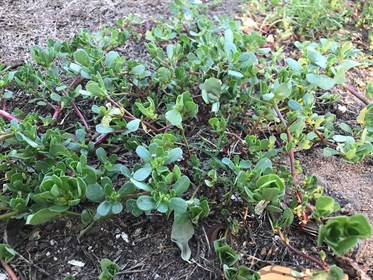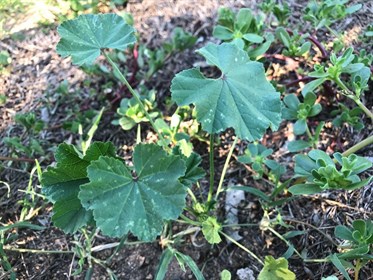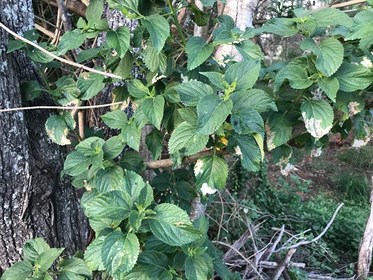|

Weeds, such as pigweed, are often the first plants to grow after rain especially during a drought. © Ellie Jolley
By Equestrian Life
Recent rain in some areas, particularly along the eastern coast of Australia, has caused large amounts of weeds to appear in paddocks and yards.
As weeds often appear first and grow faster than grass, they can create issues for horse owners.
Dr Louise Cosgrove from Exclusively Equine Veterinary Services in Queensland said while weeds can hold some danger for horses if they are ingested, there are several ways owners can battle against the invasion of weeds that come just after rain.
“It's hard when you're in a drought-stricken area that has suddenly received rain because the first thing that comes through is weeds. And then the horses go, ‘Oh, it’s green. I’ll eat it’, only because they're starving. But horses are innately very selective eaters. If they have enough grass and hay, they will not choose weeds over the grass,” she said.
Some of the more common weeds growing in the areas most affected are pigweed and marshmallow weed. And while the first can be mostly considered a nuisance, the other can have deadly consequences.
“Horses have to ingest a lot of pigweed to make it toxic to them. And it's really bitter because it’s a succulent. They really won’t graze it, if they have other things to choose from,” Dr Cosgrove said.
Late last year, several horses on the Darling Downs in Queensland died after ingesting marshmallow weed. And Dr Louise said they have treated four toxicity cases in the last six months.

Marshmallow poisoning can cause serious health issues for horses. © Ellie Jolley
“There are certain weeds that a horse will have to eat his body weight in to get really sick. We had a toxicity case here the other day which was from marshmallow weed. If you put a horse in a paddock with grass and marshmallow weed, they won't eat the marshmallow weed. But it can be really dangerous if they are given no other option.”
“We also had one that decided to start eating the lantana because there was nothing in the paddock. Lantana is also quite bitter at the best of times, but that horse got very sick.”
“Fireweed can also cause some issues. If horses eat a lot of fireweed, it can create several medical conditions and in the worst cases, it can be fatal. In the Southern states, they get the dandelion weed that comes through and that can cause stringhalt. They don't actually get toxicity from it, but they do get medical conditions.”
“Oleander is another one. It's not actually a weed, it’s a tree. But it’s an interesting one because they only have to ingest one leaf and they’ll get oleander poisoning. But people love to grow oleanders so whenever I've seen oleander in a yard where they've got horses, I'm like ‘pull it out!’”

Not only is Lantana a poisonous plant for horses, but it is also a restricted species that can choke other plants and spreads vapidly. © Ellie Jolley
But there are several steps horse owners can take to prevent the weeds from appearing the paddocks.
“It's all really about pasture management. So, make sure you're not over-grazing so that it doesn't become barren or bare, which is near on impossible in a drought,” Dr Cosgrove said.
“But other things you can do is to actually spray the weeds and rest the paddock. Even if it means locking the horses up for seven days and spraying the weeds because once they start to wilt, they become extremely bitter and disgusting.”
“There are quite a few herbicides out there that you can use so you don't have to rest your pasture for months or months. But keeping weeds under control is really important.”
But Dr Cosgrove warns there are other dangers to horses’ health from new, drought-stressed grass.
“Green, fast-growing grass can be quite stressed because it is growing so fast and it can have a higher nitrogen level. And that can cause colic,” she said.
“The other problem that it can cause is laminitis because horses suddenly start seeing so much green grass and their brain thinks that they need to make up for the last six months. So, they just haul it down, get too much sugar and start to flare up their laminitis.”
“If your horse or pony is prone to laminitis, it's best to lock them up when the pasture is the most stressed due to the sunlight. They are best off being let out either in the early morning or late evening when the sun isn’t wilting the grass.”
READ THE LATEST NEWS ARTICLES HERE

|

